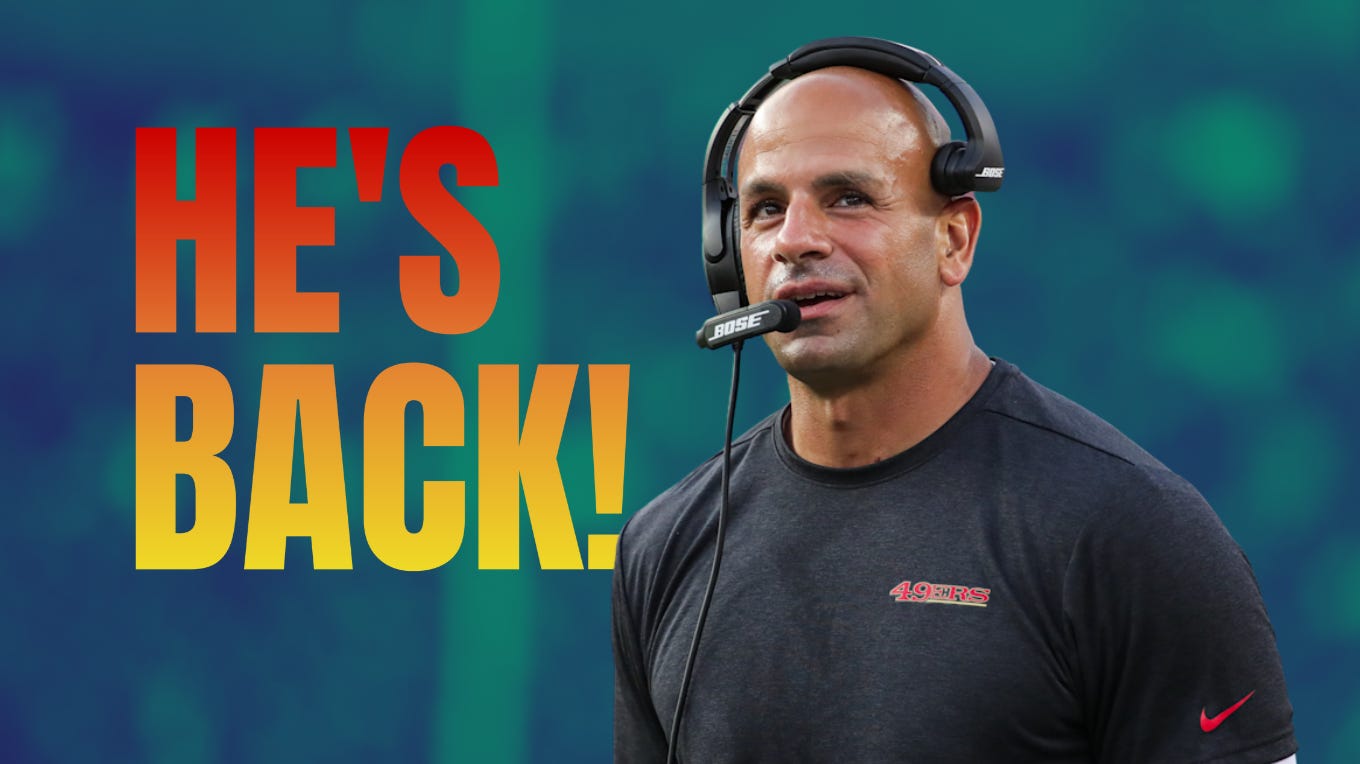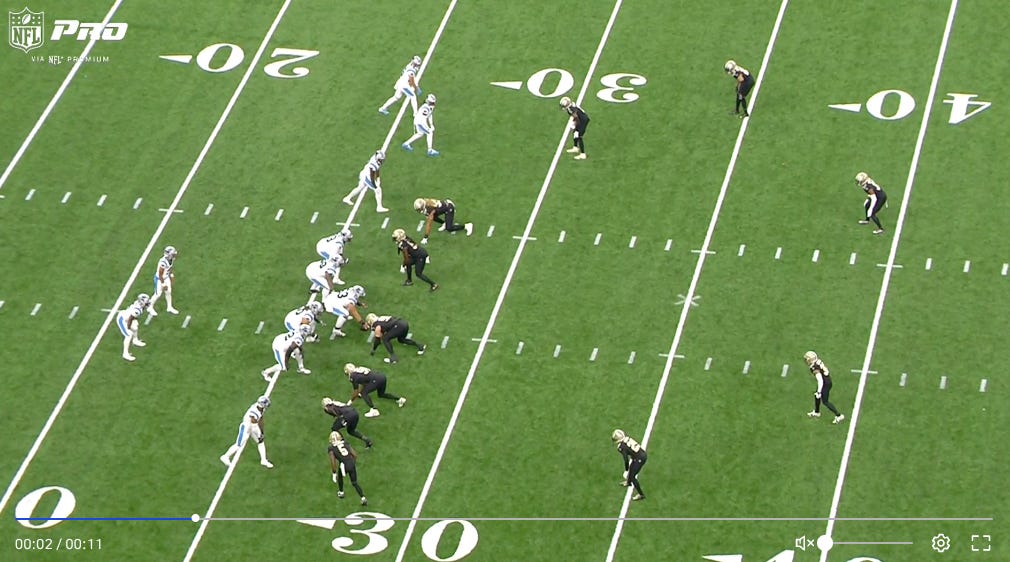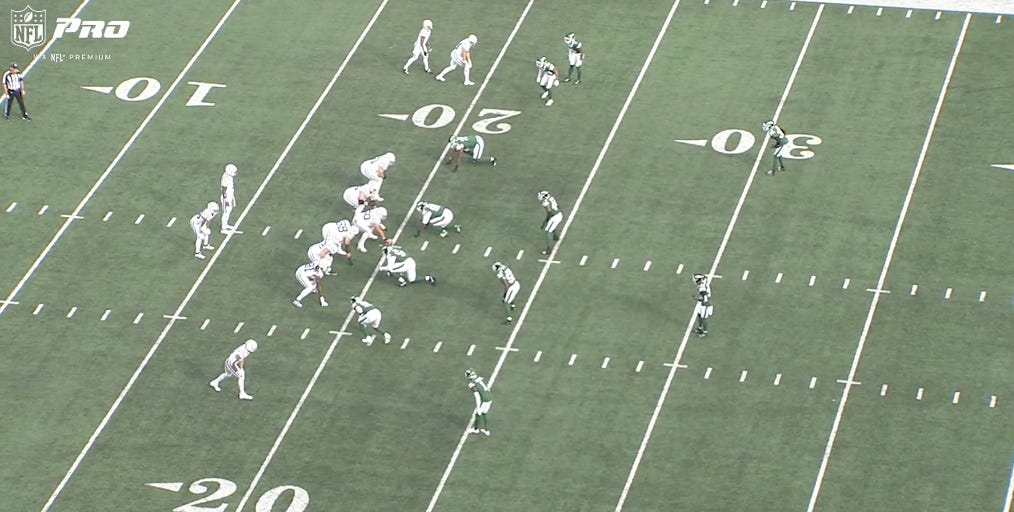NFC Coaching Changes: How the 4 New Defensive Coordinators Will Impact IDP Leagues for 2025
Mike Woellert looks at the new NFC DCs, their philosophies, and who to target in IDP drafts.
The NFL is a fickle mistress when it comes to coaching. Oh, you coached a top defense last season? Well, you sucked this year, so you’re gone. But then teams will hire a coach who sucked a few years ago and start the same cycle over again.
The NFC didn’t have as many changes as the AFC, but there were four changes we need to look into. In this article, we’ll analyze the new DCs, their schemes and philosophies, and identify which players to target in your 2025 IDP drafts.
1. Chicago Bears
Matt Eberflus was relieved of his coaching duties about halfway through the 2024 season. Chicago pried a coach from a divisional rival, landing Ben Johnson. Johnson, known for his offensive mind, hired Dennis Allen to be his defensive coordinator, whose defenses in New Orleans were a strength from 2017 to 2023.
Defensive Philosophy
Johnson has articulated a clear vision for the defense that aligns with Allen’s expertise, drawing from their respective experiences and the team’s current personnel. Their overarching defensive philosophy centers on disrupting the opposing quarterback, a principle he has stressed as fundamental in today’s quarterback-driven NFL. He has framed this approach as a mirror to his offensive mindset: just as he aims to set up his own quarterback for success, he wants the defense to focus on making life difficult for the opposing signal-caller.
Allen’s schemes lean heavily on a four-man pass rush to generate pressure, supplemented by strategic coverage designed to challenge receivers and disguise intentions. His Saints defenses were not known for frequent blitzing—typically ranking in the middle to lower half of the league in blitz percentage—but instead relied on exotic pressure packages and well-timed overloads to confuse quarterbacks.
These are just a few of the alignments Allen utilized with New Orleans:
Defensive Line Unit
The alignment will prioritize versatility and penetration, tailored to maximize the strengths of current personnel while addressing gaps through scheme adjustments and potential offseason acquisitions.
Montez Sweat, a proven edge rusher, will anchor one side, likely playing as the strong-side defensive end or “big end” in Allen’s system. It might not have seemed like it, but Sweat generated consistent pressure despite producing just a 1.8% sack rate:
Gervon Dexter’s athleticism fits Allen’s desire for active, upfield linemen. The 1-tech, potentially Andrew Billings, will play a more traditional nose role, aligning over the center.
Allen’s history with the Saints suggests he’ll use “NASCAR” packages with four speed rushers across the line to overwhelm protections.
Dexter led the interior in pressure rate and produced a 1.8% sack rate:
Disruption and physicality with their identity.
Linebacker Unit
I don’t see a lot of change to their LB group. Jack Sanborn left in free agency, so they will just stay in nickel or 2-LB with TJ Edwards and Tremaine Edmunds.
Allen demands linebackers who can handle multiple responsibilities—run defense, pass coverage, and occasional pass rushing. Edwards can handle all three very well and is more of the Demario Davis, though I do think Edmunds continues to wear the dot.
Defensive Back Unit
The Bears’ defensive backs will operate in a scheme that blends man-to-man press coverage with disguised zone looks, tailored to the personnel’s strengths and Allen’s preference for challenging receivers at the line.
Jaylon Johnson’s length and elite technique make him ideal for Allen’s system, especially his ability to jam up receivers. Kyler Gordon will man the slot in nickel packages, a critical role in Allen’s scheme given the rise of slot receivers and tight ends.
Hopefully, Jaquan Brisker is over his concussion issues. He should align closer to the box to cover tight ends, support the run, or blitz. Kevin Byard’s range and football IQ allow him to patrol the back end, cleaning up overthrows forced by pressure and reading the quarterback’s eyes to jump routes.
IDP Targets for 2025
There are quite a few targets here. I like Sweat and Dexter as I think Allen will get some production out of these two. I prefer Edwards to Edmunds. I’m very high on Gordon’s role this season and could put up DB2/3 numbers. Byard and Brisker both carry DB2 upside.
2. Dallas Cowboys
The Cowboys are a staple in the NFL news cycle. Gone are Mike McCarthy and Mike Zimmer, and in come Brian Schottenheimer and Matt Ebrflus. This team will test the theory that some coaches are better coordinators than head coaches. As a defensive coordinator, Eberflus has a track record of producing defenses that are generally above average, with particular strengths in stopping the run and forcing turnovers.
Defensive Philosophy
Eberflus is recognized for his emphasis on creating turnovers and fostering an opportunistic defense. Addressing reporters in February 2025, Eberflus stated, “We will take the ball away,” highlighting his focus on generating takeaways.
His scheme typically employs a “bend but don’t break” approach, often using two-high safety looks, keeping the middle of the field open, and relying on key positions like the 3-technique defensive tackle and edge rushers to generate pressure.
Together, Schottenheimer and Eberflus appear to align on a team philosophy where the defense supports the offense by creating short fields through turnovers.
Defensive Line Unit
Eberflus’ scheme is heavily influenced by the Tampa-2 and Vic Fangio systems, emphasizing a one-gap, attacking front. The defensive line is tasked with penetrating gaps rather than two-gapping (controlling blockers), aligning with his philosophy of stopping the run and generating pressure. The 3-technique tackle is a cornerstone, designed to disrupt passing lanes and collapse pockets. It’ll boil down to three things:
Aggression
Disruption
Takeaways
Micah Parsons will be unleashed as a multi-positional weapon—sometimes rushing, sometimes dropping into coverage—to keep offenses guessing.
When you see it visually, Parsons’ production is hysterical:
Osa Odighizuwa anchors against the run, all tailored to Eberflus’ goal of a top-tier takeaway machine. The scheme’s success hinges on execution.
Linebacker Unit
The Cowboys should be nickel-heavy, so two off-ball LBs should see the field for the majority of the game. The linebackers are the cleanup crew behind an aggressive, one-gap defensive line, tasked with filling gaps, pursuing ball carriers, and finishing tackles. Run defense is priority one and Eberflus expects his linebackers to read keys quickly, flow to the ball, and prevent big gains.
That’s why the acquisition of Kenneth Murray is a head-scratcher. PFF didn’t grade him particularly well overall (45.9) or against the run (35). Eberflus is more than familiar with Jack Sanborn’s abilities in his defense during their time in Chicago. I’m not sure DeMarvion Overshown can be relied on at this point, which pains me to say because I like his game.
Defensive Back Unit
Eberflus’ philosophy for defensive backs aligns with his overarching defensive ethos: stop the run, take the ball away, and play smart with intensity. The secondary is the last line of defense against the pass but a first-line weapon for takeaways. They’re coached to read quarterbacks, not just receivers, using pre-snap disguises.
Run support is non-negotiable—safeties like Donovan Wilson will hit like a linebacker, and corners must shed blocks to limit yards after contact.
DaRon Bland and Trevon Diggs will be called upon to turn the ball over.
IDP Targets for 2025
Parsons is locked in as a DL1. I prefer Sanborn in Eberflus’s defense over Murray and Overshown. However, whoever wins the LB2 will have IDP value because they should have a full-time role. Wilson has a nice floor as a DB3.
3. New Orleans Saints
Dennis Allen’s defenses were solid during his tenure in New Orleans, but the NFL is a “what have you done for me lately?” league, and his 2024 season led to his dismissal. In comes Kellen Moore, who brought on Brandon Staley to oversee his defense.
Defensive Philosophy
Brandon Staley’s defensive philosophy and scheme with the New Orleans Saints in 2025 are expected to center around adaptability, personnel-driven strategies, and a shift toward a more versatile defensive front.
Staley has emphasized flexibility over rigid adherence to a single scheme. During his time as the Los Angeles Rams defensive coordinator in 2020, he implemented a system that prioritized disguising coverages, leveraging player strengths, and adapting to the modern NFL’s pass-heavy offenses.
In New Orleans, he’s indicated a preference for leaning more on personnel matchups than a fixed schematic identity, suggesting he’ll tailor his approach to the Saints’ roster rather than forcing a one-size-fits-all system.
I expect a defense that’s less about a static formation and more about exploiting matchups, with a 3-4 base providing flexibility, heavy use of nickel packages, and a coverage scheme designed to keep offenses guessing.
This was one of Staley’s common deployments/alignments in 2020:
This was Staley’s most-used lineup in 2023:
Defensive Line Unit
Staley’s shift toward a 3-4 base defense means his defensive line will prioritize flexibility over traditional bulk. Staley rarely blitzes, instead using simulated pressures. He’s likely to use three down linemen which can then morph into multiple fronts. Bryan Bresee could slide between nose and 3-tech, while Cameron Jordan might play a hybrid end/edge.
Carl Granderson and Chase Young will be critical and should be stand-up rushers in the 3-4. Staley has a history of valuing edge defenders who can both set the edge against the run and drop into coverage when needed, though their main task will be to collapse the pocket and get to the QB.
Although Young had a lower 16.5% win rate and 1.5% sack rate, he still produced a 14.5% pressure rate and was disruptive with 12 QB hits and 47 hurries. Hopefully, he can improve the win/sack rates in 2025 under Staley.
Linebacker Unit
Staley’s linebacker philosophy emphasizes speed and matchup exploitation over size. He’ll want his ILBs to handle the run early (first and second downs) while transitioning to coverage or blitz roles in passing situations. In 2023, Staley went nickel/2-LB 84% of the time. However, in 2020, he used single-LB nearly 45% of the time. It could have been a talent issue. I project Staley to utilize two off-ball LBs in nickel, utilizing a 3-3-5 or 4-2-5 as the primary look, with situational use of “bear” fronts (five down linemen) to disrupt passing downs.
Demario Davis and Pete Werner will see the majority of the snaps. The Saints might want to get faster, so I wouldn’t be surprised to see them draft Demario’s replacement soon. Davis is still highly productive and you could make an argument that he still has some gas in the tank:
Defensive Back Unit
Staley’s secondary will be built around a mix of cornerbacks and safeties who can handle multiple roles in man coverage, zone drops. They’ll also be called on to blitz, so flexibility will be key between nickel, base, and even dime packages. Staley favors a two-high safety structure (Cover 4 or Cover 6) to limit explosive plays
Alontae Taylor (29) and Will Harris (30) led the DB group in pass-rush snaps. Staley’s going to love Taylor’s aggressiveness and sack rate (15.4%). Though, 3 of his sacks came in Week 1. Taylor has the flexibility to play anywhere, and he had 91 snaps on the edge/LB.
Tyrann Mathieu and Justin Reid are the likely starters. Mathieu should roam deep in Staley’s scheme while Reid plays a bit closer to the line of scrimmage.
Staley values safeties who can rotate between deep thirds and intermediate zones, so both will swap roles fluidly.
IDP Targets for 2025
Bresee is a target in DT-required leagues, and I think Granderson is shaping up to be a DL2. Young returns after a solid season and also looks to be a DL2 after a productive season. Davis is Mr. Consistency, and Werner’s potential usage put them both in LB3 conversations. I like Taylor’s potential, and I’d target Reid above Mathieu.
4. San Francisco 49ers
The 49ers welcome back a familiar face as their defensive coordinator: Robert Saleh. After a few miserable seasons with the Jets, Saleh returns to San Francisco to reprise his role that enabled him to be a hot head coaching candidate.
Defensive Philosophy
Saleh’s scheme is primarily a 4-3 defense, designed to generate pressure with a four-man front while maintaining disciplined coverage on the back end. A key component is the use of a single-high safety structure, often with a free safety who has exceptional range to cover deep threats, paired with a strong safety closer to the line of scrimmage to support against the run or in underneath coverage. This allows the defensive line to focus on one-gap responsibilities, aiming to penetrate and disrupt rather than just occupy blockers. He’s “all gas, no brakes.”
He emphasizes turnovers, as his 2019 49ers defense forced 27 takeaways.
Saleh is about creating a tough, fast, and cohesive unit that dictates terms to the offense through pressure, physicality, and opportunistic playmaking.
This was one of Saleh’s most-used lineups in 2024:
Defensive Line Unit
A hallmark of Saleh’s philosophy is generating a consistent pass rush without frequent blitzing. He leans heavily on his front four to pressure the quarterback, reducing the burden on the secondary.
Saleh often deploys his defensive ends, especially the LEO, in a “Wide-9” technique—aligned outside the tackle or tight end. Nick Bosa is probably over the moon to welcome Saleh back, as he enjoyed a huge rookie year with 102 pressures.
Bosa could use a formidable teammate opposite, especially since they lost Leonard Floyd, so I wouldn’t be surprised to see them address the edge position in the draft, with the class so bountiful in talent.
As you can see, things get a bit shaky without Floyd:
Linebacker Unit
Saleh prioritizes linebackers who can play fast and react instinctively. His scheme is designed to be straightforward, reducing the mental load so players can rely on their athleticism and smarts. They’re expected to take on blocks, shed them effectively, and tackle securely to limit yards after contact.
Saleh is about unleashing athletes to play downhill against the run, cover dynamically in space, and finish plays the defensive line starts
The loss of Dre Greenlaw creates a big hole in the group, as he and Fred Warner were a formidable duo. The 49ers signed special teamer Luke Gifford, and Dee Winters is still there. The depth is pretty shaky. I think they address the position in the draft.
Defensive Back Unit
Saleh’s defensive backs, particularly cornerbacks, are expected to be aggressive and physical, especially in press coverage. He wants them to jam receivers at the line of scrimmage and disrupt their timing. Saleh relies heavily on a single-high safety look—typically Cover 3 or Cover 1—requiring defensive backs to maintain their assignments with precision. Both safeties and corners are coached to attack the ball in the air, turning coverage into turnovers. They won’t be relied on to generate pressure but to produce coverage sacks.
I’m high on a Malik Mustapha breakout in Saleh’s defense, as he should be the hitter in the box. He’s the poster boy for “all gas, no brakes.” Although he’s off the LOS, this was a fantastic play by Mustapha that highlights his upside:
IDP Targets for 2025
For now, it’s pretty simple: Bosa, Warner, and Mustapha. Bosa’s track record of production speaks for itself, and if healthy, he should slide back into the DL1 production we’ve come to expect. Warner is a consistent IDP producer, and Mustapha is on the cusp of a breakout season. I don’t mind targeting him as a DB2.
Be sure to subscribe to The IDP Show on Apple, Spotify, or YouTube.














